#Vidyun
Explore tagged Tumblr posts
Text
So I just watched this beautiful animated movie called Tripura: The Three Cities of Maya and now Vidyunmali is living in my head rent free
Look at this boi 😈

He just a lil baby 🥰

That smile tho 🥹

Smol blanket burrito 😊
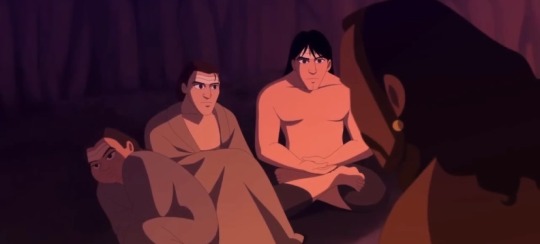
“Bro, you need help, for real” 🫤

AWWWW HE’S TOO FUCKIN CUTE 💖
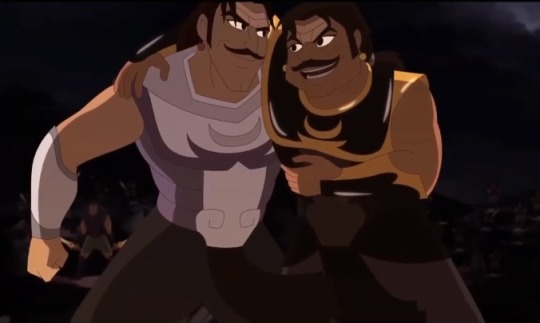



Hey Siri, how do I adopt an Asura king?
#rambling#Tripura the three cities of Maya#Vidyun#Vidyunmali#this man istg#I love him to bits#*holds him gently*#behold the little meow meow#he’s so silly#literally just a baby#(also for the record I mean absolutely no disrespect)#(I just tend to get very attached to obscure animated villains)#(just thought I’d clarify for any newcomers to my posts)
3 notes
·
View notes
Text

"Gecko’s Garage"
Andaman & Nicobar Islands, India
"The Andaman Day Gecko or the Green Emerald Gecko is a bright-colored gecko endemic to the Andaman Islands. The young photographer was on vacation when he spotted this shy reptile lurking inside a chandelier light."
By Vidyun Hebbar
2023 Nature “inFocus” Photography Contest
#vidyun hebbar#photographer#nature “infocus” photography contest#andaman day gecko#gecko#reptile#green emerald gecko#anadaman & nicobar islands#india#nature
19 notes
·
View notes
Text
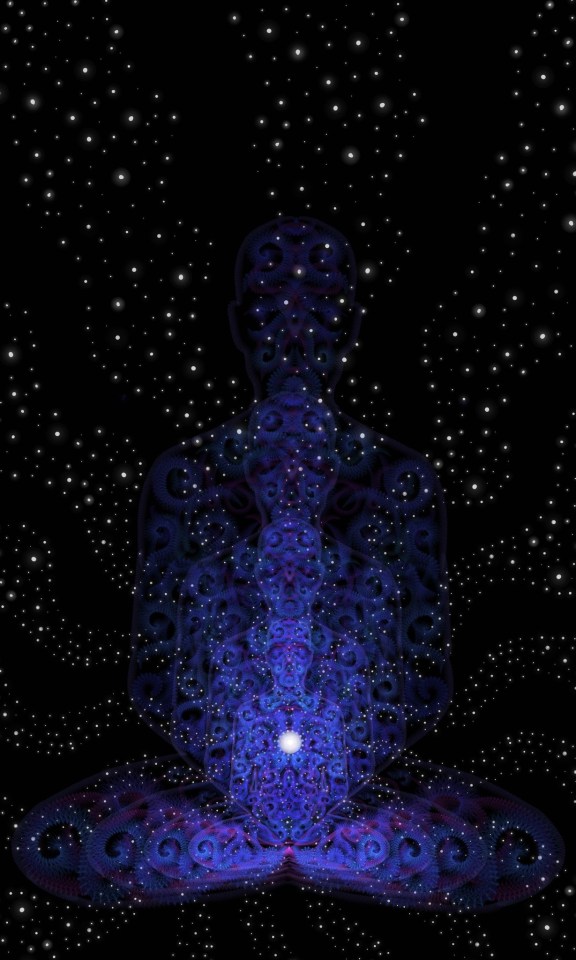

Presence is far deeper than our person.
he Various Forms of "Tandava"
Tandava is the divine dance performed by Lord Shiva. It is considered to be the source of the cosmic cycle of creation, preservation and dissolution. The word Tandava comes from Tandu, the attendant of Lord Shiva, who at Lord Shiva’s orders, instructed Bharat muni, the author of Natya Shastra, the usage of Angaharas and Karanas, which together constitute this cosmic dance.
“Pumnrityam tandavam, prahu: stree nrityam lasyamuchyate”
Tandava the masculine form of dance is attributed to Lord Shiva which is forceful and full of vigour often manifesting anger and fear while lasya anga attributed to Godess Parvathi is the feminine form where the movements are gentle and graceful often depicting love and affection.
The deep significance underlying this dance form is the personification of Lord Shiva as Nataraja or Nritya Murti. His dance is supposed to represent the five manifestations of eternal energy- Srishti (creation), Sthiti (preservation), Samhara (destruction), Tirobhava (illusion) and Anugraha (emancipation).
The various Tandavas are described in Bhavaprakash and in the Abhinaya Darpanam of Nandikeswara.
In the Bhavaprakash five forms of Tandava are described:
Ucchanda: This includes the forceful and quick Angaharas, Akaashacharis and Bhramaris. Raudra, Bhibhatsa and Bhayanaka are the rasa associated with this.
Chanda: This is represented by Bhumichari karanas and angaharas and evokes Veera and Raudra rasa.
Prachanda: This tandava involves jumping forceful karanas and bhramari. Rasas associated with this are Raudra and Bibhatsa.
Prerana and Prapana: These two are considered to be of tepid and are less forceful and masculine.
Nandikeswara in his Abhinaya Darpanam describes seven types of Tandava which are believed to have been performed by Lord Shiva.
Sandhya Tandava: A form of tandava performed by Lord Shiva at the time when the world was poised between lingering day and the oncoming darkness of the night. It was the dance of creation and scriptures. It is believed that Sandhya Tandava protects one and all.
Ananda Tandava: This form of Tandava was performed by Lord Shiva for protecting his disciples. In Chidambaram temple, the deity is represented in this pose. The image is depicted with four hands holding the drum, fire, the right hand in the Abhaya Hasta, the left hand with the Danda Hasta bestowing boons. The left leg is in Kunchita pada and the right tramples upon the sole. This posture is also known as the Sada Tandava.
Kali or Shakti Tandava: This Tandava is the type performed by Shiva and Kali. It is believed that Kali or Shakti is the energy that cannot be separated from Shiva. Shiva has the power to create only when he is united with Shakti.
Tripura Tandava: This is the Tandava performed by Shiva after killing the three rakshasas, Tarakakasha, Kamalaksha and Vidyun mali. He fought the rakshasas driving the earth as his chariot, Meru as the bow, Sun and Moon as the wheels, Adishesha as the rope, Lord Vishnu as the arrows, four vedas as horses and Lord Brahma as the charioteer. By destroying these rakshasas he freed the three worlds from evil.
Sati and Shiva Tandava: This Tandava is believed to have been performed by Shiva and Sati. This represents the eternal dance of the Man and Woman, depicting the unity of Purush and Prakriti. This item also depicts both forms of dancing, Tandava as well as Lasya.
Ardhanaari Tandava: This type of Tandava was performed to show the unity between Nature and God. Shiva took Parvati as a part of himself and assumed the form of Ardhanareeswara – one half man the other half woman.
Samhara tandava: This is the dance of annihilation and release. Shiva is believed to have performed this when Sati burned herself in ashes. Shiva in anger danced so vigorously that lords feared destruction of the three worlds. Only when Lord Bramha, Lord Vishnu and Devas appealed to him did he return to normalcy.
The concepts of Tandava and Lasya represented Shiva and Parvati have been the source of inspiration for most dancers across classical dance forms and across generations as it encompasses the entire cycle of cosmic evolution and stands for the dual personification of the Absolute.

129 notes
·
View notes
Text

Young Photographer special mention: Gecko’s Garage by Vidyun Hebbar.
The Andaman day gecko or the green emerald gecko is a bright-coloured gecko endemic to the Andaman Islands. The young photographer was on vacation when he spotted this shy creature lurking inside a light shade.
Photograph: Vidyun Hebbar/2023 Nature inFocus Photography Awards #gecko #naturephotography
5 notes
·
View notes
Text
My first Vidyun edit ❤️ I am way too sentimental about this man 😊
0 notes
Photo

Non-fiction graphic novel tells stories of exclusion, struggle in India Sequel to "First Hand" WARNING: THIS PAGE HAS AUTOPLAY VIDEO
#Centre for Equity Studies#First Hand 2#FirstPost#graphic novel#india#non-fiction#Orijit Sen#Vidyun Sabhaney#Yoda Press
4 notes
·
View notes
Text
The Winners of the 2021 Wildlife Photographer of the Year
The Natural History Museum in London has announced the winners of the 2021 Wildlife Photographer of the Year contest. Photos above are by Jonny Armstrong, Buddhilini de Soyza, Lasse Kurkela, and Vidyun R Hebbar.
1 note
·
View note
Text
Check out breathtaking examples of adaptive reuse in five Indian cities - art and culture

When a structure is saved, it can transform a neighbourhood. That’s the principle of adaptive reuse — that when you restore a crumbling building, turn the insides into something completely different and make it relevant again, you shine a light on the space, the area, and its history.We haven’t got that far yet. In Kolkata, a 93-year-old residence is now a boutique bed-and-breakfast, but all around it are crumbling historic homes.In Delhi, the rooftop Walled City Café overlooks a crumbling and neglected Shahjahanabad. In Mumbai, a once-iconic mill now hosts yuppie beer-guzzlers and theatre lovers, but most of the mills in the city stand forlorn.Still, it’s a start. “Adaptive reuse projects become an example for others to emulate,” says conservation architect Kirtida Unwalla. In south Mumbai’s Kala Ghoda art district, she points out, what started as isolated incidences of heritage reuse have turned into a flood of cafés, restaurants, retail stores and art spaces housed in bits of history.Unwalla helmed one such transformation — when the high-street brand Zara moved into the five-storey, 110-year old Ismail Building that now lights up the street it’s on.

The entrance to The Walled City Cafe, situated in a 200-year-old haveli in Old Delhi. The principle of adaptive reuse is that when you restore a crumbling building, turn the insides into something completely different and make it relevant again, you shine a light on the space, the area, and its history. ( Sanchit Khanna / HT Photo ) “The new spaces coming up in heritage structures has really changed the area, making it livelier and more visited,” she says.Some of the earliest examples of adaptive reuse in India involved the palaces of Rajasthan. The 15th-century Neemrana Fort was once of the first; it was converted into a luxury hotel in 1991. Other examples include the 18th-century Lake Palace in Udaipur and the 19th-century Falaknuma palace in Hyderabad, both now ultra-high-end hotels.In the cities, the practice is still fairly new. But it’s happening.A decrepit 90-year-old four-storey house in Kolkata was recently in the spotlight after its owner put it up for sale, but only to buyers who committed to not tearing it down.“The enhanced value of a restored and adapted structure is yet to be fully appreciated in India, as it is in the UK, Europe and even the US,” Unwalla says.
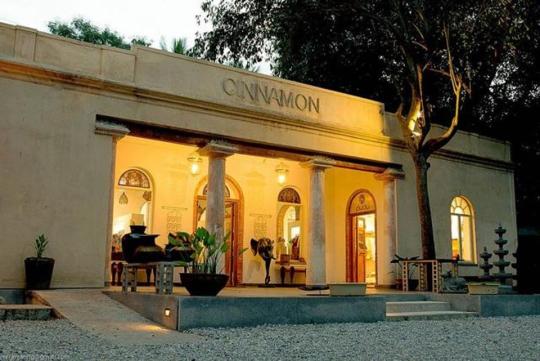
Built as an orphanage in 1876, this Bengaluru building now houses the boutique store Cinnamon. ‘We picked the space because restoring it would be a way to remember Bangalore as it was,’ says owner of the brand Radhika Poddar.Money is a key factor, of course. Restoration, renovation and maintenance are significantly more expensive for old structures that typically need specific types of wood, roofing and tile, and need near-constant attention. The new tenants then take longer to turn profitable or make back their investment.“Big investments in restoration also often mean that the demography of a place changes,” says conservation architect Aishwarya Tipnis. “To make up for the money put in, if one runs a café, it has be a high-end one. This leads to more such places in the area, often changing a middle-class neighbourhood into a gentrified one. So one needs to ask what we are preserving,” she says.It doesn’t help that the government offers virtually no incentives, instead turning red tape into another deterrent.As Tipnis puts it: “We could’t really have a gallery like London’s Tate Modern or Paris’s Musee d’Orsay because the flexibility of using an abandoned power station or railway station for something so different simply does not exist here.”Delhi: Coffee, literature, history...On the first floor of a 200-year-old old haveli in Old Delhi, is a café that looks out over the Jama Masjid and the sprawl of Shahjahanabad.
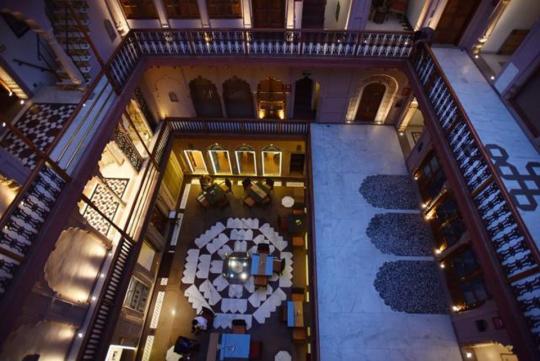
Chandni Chowk’s Haveli Dharampura was restored by BJP MP Vijay Goel, a heritage enthusiast and activist. It is now a luxury heritage hotel and offers kathak and classical music performances. ( Sanchit Khanna / HT Photo ) “The house belongs to my sister-in-law, Zeenat Shafi, and was practically abandoned for over 12 years, after she moved to Canada,” says Sheeba Aslam Fehmi, who lives next door and is food curator for the Walled City Café. “By 2016, it was in such bad shape, it needed urgent repairs. When we were halfway through we realised that this nice open space on the first level would be a good place for people to meet, hangout and eat. It reminded us of the beautiful cafés of Istanbul.”The building had what she calls an ‘Anglo-Muslim’ ambience, with fireplaces, chimneys and a courtyard. It is now a popular venue, especially for literary and cultural events.Not far from WCC, is the splendid Haveli Dharampura — a grand home from 1887, with intact marble jaalis and wide courtyard, now a luxury hotel. It’s owned by the BJP MP Vijay Goel, a heritage enthusiast and activist. “The idea was to restore a part of it as a museum to set an example for others to emulate,” says his daughter, Vidyun, who handles marketing for the space.Once restoration began, the spacious rooms and corridors seemed perfect for a hotel. Work that was planned for six months went on for over six years; the hotel opened its doors in 2016. In addition to rooms and dining, it offers Kathak and classical music performances. “Turning it into a hotel has really helped with funding of the upkeep of a structure like this,” says Vidyun.Kolkata: Check in, check it outThis building was saved as a result of another interesting urban heritage phenomenon — the heritage walk.

The Calcutta Bungalow is a heritage bed-and-breakfast in a restored 1920s residence. This part of the city has several such once-splendid, crumbling structures. ( Samir Jana / HT Photo ) The founders of Calcutta Walks came upon it while researching a new walk around Radha Kanta Jew Street. “There it stood, with its green lattice shutters, arched windows and generous wide balconies,” says Anirban Dutta. “We keep coming across such buildings on our walks around the city, and most of them are in a shambles. We decided to do something about this one because it had so much potential — the ornate facade, wide road in front, relaxed and friendly neighbourhood.” The plan was to turn it into a bed-and-breakfast, “because, you know, we’re already in touch with tourists all the time”.The 90-year-old structure needed much more work than they anticipated. “It was hard to raise the funds,” he says. The restoration took two years, with artisans coming in from Murshidabad to work with chuna-surkhi or lime concrete. The place opened to guests in May 2018. It will take at least until 2023 to break even, Dutta estimates. “But we hope more people will see that it is possible to work on these beautiful buildings and not tear them down.”Goa: Beer at a millThis was a project that began with architect and heritage conservationist Raya Shankwalker deciding he wanted to find an old structure and make it an example of adaptive reuse.

The Rice Mill Cafe, in an adapted rice mill in Morjim, Goa, wears a distressed look to retain a sense of what it was — as well as keep costs down. ‘In a lot of such projects, people go overboard with the spending, and then it becomes very difficult to make the venture profitable,’ says owner, architect and heritage conservationist Raya Shankwalker. ( Harshan Thomson ) His friend said he had just the think — an abandoned rice mill his family owned in Morjim, a coastal town in north Goa. “Travelling in Europe over the years, I’ve spent so many wonderful hours in quaint cafés and bars, housed in some beautiful old structure with an interesting story,” Shankwalker says. “I wanted to do a similar thing here.” So he and a relative invested in the mill.The exterior was intact, and the idea was to give the interiors a distressed look so it would feel like a mill. This helped keep budgets down. Shankhwalker says that kept the whole operation frugal too. “Our design is largely achieved by minimalism. Almost nothing expensive. Just surface treatments and simple elements of décor.” He adds that in a lot of such projects, people go overboard with the spending. “And then it becomes very difficult to make the venture profitable.”Adaptive reuse really works for commercial spaces because people like to be in a space with a story, he adds. Shankhwalker says the bar is now doing well and is well-entrenched in the area.Mumbai: Factory floor to office In Mumbai, an old soap factory is now a posh office and a buzzing café, with silos and chimneys still in place to hint at their history.

What used be the boiler space of the Godrej soap factory is now the Vikhroli Social. ( Edmund Sumner ) “When I first visited this Godrej property, which was to be redeveloped, we decided that the structure of the factory, which spoke to the group’s legacy, must be retained — but not as a museum,” says Anubhav Gupta, business head at Vikhroli and head of corporate social responsibility and sustainability at Godrej Properties. “We wanted it to be a functional space that spoke of the past but looked to the future.”So two of the structures on the plot are now the Imagine Studio, a marketing office for Godrej properties; what used to be the boiler space is the Vikhroli Social. While the structures are open-plan, with smart glass façades, the cast-iron factory equipment works as a reminder of the past.“We are going for a mixed use development approach that will have residences, offices and a five-star hotel too,” Gupta says.Bengaluru: browse with history Cinnamon, a clothing and home décor brand, specialises in products with an Indian aesthetic but contemporary design. When it came time to move from their leased store in Bengaluru, they decided to try and find a space that reflected their identity.“We came across this dilapidated bungalow at Ulsoor, in 2013. Restoration took about 10 months,” says Radhika Poddar, founder and owner of Cinnamon.Originally built as an orphanage in 1876, Poddar says she picked the space because restoring it would be a way to remember Bangalore as it was and maintain a piece of its heritage.The design suited her too — a courtyard perfect for a café; the rooms arranged around it ideal to showcase product lines. The challenge of maintenance remains. “I will say that one must be prepared to take on constant upkeep when one moves into a heritage structure,” Poddar says. “Still, it is a unique space, a piece of social history, and exactly what we were looking for. Read the full article
2 notes
·
View notes
Text
Milano, la forza della natura raccontata attraverso i 100 scatti vincitori del Wildlife Photographer of The Year.
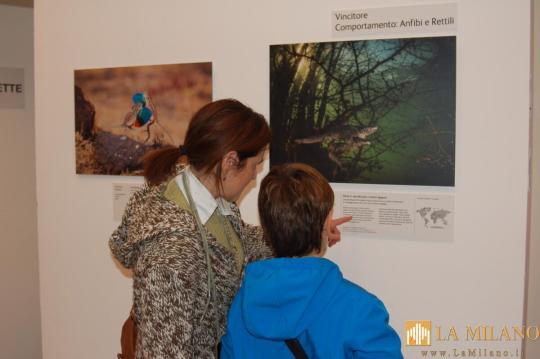
Milano, la forza della natura raccontata attraverso i 100 scatti vincitori del Wildlife Photographer of The Year. Sarà Milano, presso il Palazzo Francesco Turati di via Meravigli 7 (zona Cordusio) dal 30 settembre al 31 dicembre 2022, a ospitare la celebre mostra fotografica Wildlife Photographer of the Year. È la decima edizione nel capoluogo lombardo, organizzata da Radiceunopercento, l’Associazione culturale con la collaborazione del Comune di Milano. 100 sono gli scatti premiati ed esposti , sui 50.000 inviati, alla 57ªedizione del concorso fotografico indetto dal Natural History Museum di Londra. 96 sono i paesi da cui provengono le fotografie scattate da fotografi professionisti e dilettanti. Una giuria internazionale di esperti hanno, sui criteri di creatività, valore artistico e complessità tecnica, selezionato le foto finaliste al termine dell’anno scorso; si tratta di fotografie che mostrano specie animali in vie di estinzione, habitat sconosciuti e comportamenti non visibili quotidianamente e paesaggi provenienti da tutto il mondo. È la natura, con la sua potenza e la sua fragilità la protagonista dell’esibizione. È il biologo francese, nonché fotografo subacqueo Laurent Ballesta, con Creation, ad aver vinto il titolo di Wildlife Photographer of the Year 2021. Lo scatto raffigura un trio di cernie in una nuvola di uova e sperma, un gioco di movimenti ottenuto dopo 5 anni di lavoro diurno e notturno a Fakarava, nella Polinesia francese; l’evento raro perché presente solo una volta all’anno è sempre più unico per via della specie in via di estinzione minacciata dalla pesca intensiva, la laguna polinesiana è uno degli ultimi posti in cui questi pesci possono vivere ancora liberi, perché è una riserva. Vidyun R.Hebbar è il giovane indiano vincitore del Young Wildlife Photographer of the Year 2021 insieme alla sua Dome home, foto che illustra un ragno all’interno di una fessura di un muro. Tra i vincitori di categoria l’aostano Stefano Unterthiner, con lo scatto Head to head (Comportamento dei mammiferi). Sono quattro i giovani fotografi italiani ad aver ricevuto una menzione speciale: Mattia Terreo, con Little grebe art (Under 10anni) e Giacomo Redaelli, con Ibex at ease (15-17 anni)),oltre a Georg Kantioler ,con Spot of bother (Urban Wildlife)e Bruno D'Amicis, con Endangered trinkets (Fotogiornalismo). Il noto naturalista e pluripremiato fotografo al Wildlife Marco Colombo, sarà a disposizione per visite guidate alla mostra a Palazzo Francesco Turati, ogni venerdì (tre turni a partire dalle18:30 su prenotazione-acquistabili anche on demand). Inoltre, tre giovedì saranno dedicati a speciali visite guidate tematiche con esperti fotografi naturalisti: il 10 novembre (h 19:30 e 20:30) Luca Eberle racconterà i Predatori e il 17 novembre, gli Uccelli, l’8 e il 22 dicembre (h 19:30) Francesco Tomasinelli approfondirà il Mimetismo. Il Wildlife Photographer of the Year a Milano non è solo una mostra, ma anche un grande evento celebrante la natura. L’Associazione culturale Radicediunopercento organizza serate gratuite per approfondire e presentare libri con noti fotografi di natura e divulgatori scientifici che avranno luogo presso la Casa della Cultura il sabato, dalle 21 in via Borgogna 3 a Milano (zona San Babila). Saranno ospiti il 22 ottobre Bruno D’Amicis, che ha ricevuto una menzione speciale nella sezione Premio storia fotogiornalistica al Wildlife 57, con l’incontro Polimitas, le chiocciole più belle del Mondo, il 19 novembre Ugo Mellone, fotografo natura lista già premiato al Wildlife, con Il deserto del Sahara: biodiversità al limite, il 3 dicembre i celebri fotografi Francesco Tomasinelli e Marco Colombo che insieme a Chiara Borelli di Focus Wild parleranno di Evoluzione e animali incredibili, e il 17 dicembre Alex Mustard, noto fotografo subacqueo inglese che parlerà di Fauna selvatica subacquea. Sono organizzati dall’Associazione Culturale Radicediunopercento, per i più appassionati e per chi vuole saperne di più, durante il periodo della mostra, corsi teorici di Fotografia, Seminari di Scienze Naturali online e Workshop pratici in natura, con noti divulgatori scientifici e fotografi naturalisti di gran fama. Percorso espositivo: Oltre ai due massimi riconoscimenti Wild life Photographer off the Year 2021eYoung Wildlife Photographer of the Year 2021, la mostra riporta tutte immagini vincitrici e finaliste divise in categorie: Anfibi e rettili, Animali nel loro ambiente, L'arte della natura, Natura urbana, Invertebrati, Mammiferi, Oceani: la visione d’insieme, Piante e funghi, Ritratti Animali, Subacquee, Uccelli, Zone umide: la visione d’insieme, oltre alle tre sezioni dedicate ai più giovani:finoa10 anni,11-14 anni,15-17 anni. Ulteriori sezioni importanti sono le categorie documentarie: Premio per il miglior portfolio, Premio storia fotogiornalistica, Premio portfolio astro nascente, Fotogiornalismo. Le didascalie e i testi raccontano sia i requisiti tecnici della fotografia sia la storia e le emozioni che hanno motivato l'autore nella realizzazione dello scatto, insieme a dati di carattere scientifico sulle specie fotografate. Adisposizione al bookshop il catalogo della mostra con tutte le immagini premiate, il Wildlife Photographer of the Year Portfolio 31 pubblicato dal Natural History Museum e redatto da Rosamund Kidman Cox. INFO +39 3482506498/ [email protected] www.radicediunopercento.it ORARI Lunedì chiuso Martedì, mercoledì, sabato, domenica h 10-20/ giovedì e venerdì h10-22, 1°novembre, 7 e 8 dicembre h 10-20 24, 26, 31 dicembre h 10-19 ( 25 dicembre chiuso) con chiusura biglietteria 30 minuti prima. BIGLIETTI Tessere associativa € 1 (dai 18 anni) SABATO, DOMENICA E FESTIVI intero € 13/ridotto € 11 (14-17 anni, over 65 e studenti universitari muniti di tesserino valido)/€ 7 (giornalisti non accreditati disabili) INFRASETTIMANALI Intero € 11/ridotto € 9( 14-17 anni, over 65 e studenti universitari muniti di tesserino valido)/€ 5 (giornalisti non accreditati e disabili) PROMOZIONE FAMIGLIE: 1 o 2 genitori o adulti+1 o 2 bambini ( 6-13 anni) adulti € 11 / bambini € 7 Gratuito 0-5 anni VISITE GUIDATE CON MARCO COLOMBO Ogni venerdì tre turni, a partire dalle h 18:30 (su prenotazione).Le visite guidate si possono anche acquistare on demand VISITE GUIDATE A TEMA Giovedì 10 novembre h 19:30 e 20:30-Luca Eberle, Predatori Giovedì 17 novembre h 19:30 e 20:30-Luca Eberle, Uccelli Giovedì 8 e 22 dicembre h 19:30 -Francesco Tomasinelli, Mimetismo Visite guidate € 7 INCONTRI CON I FOTOGRAFI Casa della Cultura, sabato h 21 (via Borgogna 3- Zona San Babila) 22 ottobre-Bruno D’Amicis, Polimitas, le chiocciole più belle del Mondo 19 novembre-Ugo Mellone, Il deserto del Sahara: biodiversità al limite 3 dicembre-Marco Colombo, Francesco Tomasinelli, Chiara Borelli, Evoluzione animali incredibili 17 dicembre-Alex Mustard, Fauna selvatica subacquea Ingresso libero acquistando il biglietto di mostra SEMINARI DI SCIENZE NATURALI E CORSI DI FOTOGRAFIA Corsi teorici di Fotografi e Seminari di Scienze Naturali online https://www.radicediunopercento.it/corsi-in-partenza/ WORKSHOP PRATICI IN NATURA Corsi pratici in natura https://www.radicediunopercento.it/event_type/workshop/... #notizie #news #breakingnews #cronaca #politica #eventi #sport #moda Read the full article
0 notes
Text

Vidyun- Bumble
#wlw community#wlw dating#male privilege#lesbians#lesbophobia#homophobia#safety#radfem#entitlement#lesbian dating#bumble#creeps
0 notes
Text
There’s just something about unhinged animated men who can’t stop laughing evilly that makes one half of my brain wanna pinch their cheeks while cooing affectionately and the other half wants to slap them in the face while swearing like a sailor
3 notes
·
View notes
Photo

Dome home
by Vidyun R Hebbar
Wildlife Photographer Of The Year 2021
4 notes
·
View notes
Text


Presence is far deeper than our person.
The Various Forms of “Tandava”
Tandava is the divine dance performed by Lord Shiva. It is considered to be the source of the cosmic cycle of creation, preservation and dissolution. The word Tandava comes from Tandu, the attendant of Lord Shiva, who at Lord Shiva’s orders, instructed Bharat muni, the author of Natya Shastra, the usage of Angaharas and Karanas, which together constitute this cosmic dance.
“Pumnrityam tandavam, prahu: stree nrityam lasyamuchyate”
Tandava the masculine form of dance is attributed to Lord Shiva which is forceful and full of vigour often manifesting anger and fear while lasya anga attributed to Godess Parvathi is the feminine form where the movements are gentle and graceful often depicting love and affection.
The deep significance underlying this dance form is the personification of Lord Shiva as Nataraja or Nritya Murti. His dance is supposed to represent the five manifestations of eternal energy- Srishti (creation), Sthiti (preservation), Samhara (destruction), Tirobhava (illusion) and Anugraha (emancipation).
The various Tandavas are described in Bhavaprakash and in the Abhinaya Darpanam of Nandikeswara.
In the Bhavaprakash five forms of Tandava are described:
Ucchanda: This includes the forceful and quick Angaharas, Akaashacharis and Bhramaris. Raudra, Bhibhatsa and Bhayanaka are the rasa associated with this.
Chanda: This is represented by Bhumichari karanas and angaharas and evokes Veera and Raudra rasa.
Prachanda: This tandava involves jumping forceful karanas and bhramari. Rasas associated with this are Raudra and Bibhatsa.
Prerana and Prapana: These two are considered to be of tepid and are less forceful and masculine.
Nandikeswara in his Abhinaya Darpanam describes seven types of Tandava which are believed to have been performed by Lord Shiva.
Sandhya Tandava: A form of tandava performed by Lord Shiva at the time when the world was poised between lingering day and the oncoming darkness of the night. It was the dance of creation and scriptures. It is believed that Sandhya Tandava protects one and all.
Ananda Tandava: This form of Tandava was performed by Lord Shiva for protecting his disciples. In Chidambaram temple, the deity is represented in this pose. The image is depicted with four hands holding the drum, fire, the right hand in the Abhaya Hasta, the left hand with the Danda Hasta bestowing boons. The left leg is in Kunchita pada and the right tramples upon the sole. This posture is also known as the Sada Tandava.
Kali or Shakti Tandava: This Tandava is the type performed by Shiva and Kali. It is believed that Kali or Shakti is the energy that cannot be separated from Shiva. Shiva has the power to create only when he is united with Shakti.
Tripura Tandava: This is the Tandava performed by Shiva after killing the three rakshasas, Tarakakasha, Kamalaksha and Vidyun mali. He fought the rakshasas driving the earth as his chariot, Meru as the bow, Sun and Moon as the wheels, Adishesha as the rope, Lord Vishnu as the arrows, four vedas as horses and Lord Brahma as the charioteer. By destroying these rakshasas he freed the three worlds from evil.
Sati and Shiva Tandava: This Tandava is believed to have been performed by Shiva and Sati. This represents the eternal dance of the Man and Woman, depicting the unity of Purush and Prakriti. This item also depicts both forms of dancing, Tandava as well as Lasya.
Ardhanaari Tandava: This type of Tandava was performed to show the unity between Nature and God. Shiva took Parvati as a part of himself and assumed the form of Ardhanareeswara – one half man the other half woman.
Samhara tandava: This is the dance of annihilation and release. Shiva is believed to have performed this when Sati burned herself in ashes. Shiva in anger danced so vigorously that lords feared destruction of the three worlds. Only when Lord Bramha, Lord Vishnu and Devas appealed to him did he return to normalcy.
The concepts of Tandava and Lasya represented Shiva and Parvati have been the source of inspiration for most dancers across classical dance forms and across generations as it encompasses the entire cycle of cosmic evolution and stands for the dual personification of the Absolute.
35 notes
·
View notes
Text
Covid-19 pandemic is boom time for the 'faraway doctor'
Covid-19 pandemic is boom time for the ‘faraway doctor’
Tele/video-consults have been effective for patients requiring post-hospitalisation follow-up, especially if they are from outside the city; patients with chronic diseases that need periodic monitoring; and pregnant women who require routine checkup with minimum exposure.

Vidyun Sahay, a Delhi-based techie, developed a severe eye infection during the lockdown.
Not keen on visiting his…
View On WordPress
0 notes
Photo

Non-fiction graphic novel tells stories of exclusion, struggle in India Sequel to "First Hand" WARNING: THIS PAGE HAS AUTOPLAY VIDEO
#Centre for Equity Studies#First Hand 2#FirstPost#graphic novel#india#non-fiction#Orijit Sen#Vidyun Sabhaney#Yoda Press
0 notes
Text
Meet the artists resisting India’s new citizenship law
New Delhi, India – A large poster of a woman wearing hijab in the three colours of Indian flag hangs over a highway signboard near Shaheen Bagh in the Indian capital of New Delhi. “Speak, for your lips are free,” the woman in the poster commands.
She appears again on a metro pillar nearby, and again in the hands of protesters in Shaheen Bagh and across India.
More:
Thousands protest in US cities against India citizenship law
Fear in Kashmir as top general talks of ‘deradicalisation’ camps
Recipe for solidarity: How Indian protesters are being fed
For more than six weeks now, protesters across India have taken to the streets to oppose a controversial Citizenship Amendment Act (CAA), which they say discriminates against Muslims as it makes faith a basis for granting Indian citizenship.
The Hindu nationalist government says the law is meant to help persecuted minorities from three neighbouring countries, but critics say it undermines the country’s secular Constitution.
Muslims, Dalits and other marginalised groups in particular fear the planned nationwide counting of citizens (National Register of Citizens or NRC) could potentially render them stateless. A similar exercise in Assam state excluded nearly 2 million people from the citizenship list last year.
‘Celebration of democracy’
In New Delhi’s Shaheen Bagh and elsewhere, protesters have transformed public spaces with art.
“Art helps you resist and persist,” says Tanzeela, an advertising professional and the artist behind the now-iconic image of the woman in the tricolour hijab. Tanzeela found inspiration for her art in anger. “It broke me in so many ways that I was enraged,” she says.
Art is the medium through which I express myself best. I had stayed quiet for far too long, and I could no longer do so in the face of a clearly divisive law.
Lamya Khan, graphic designer
Tanzeela posted the image on her Instagram page as a form of self-expression. “I never thought my artwork would be shared across the country,” she says.
From left to right, artists Vidyun, Akshay, Gargi, Lokesh and Shefalee with their artwork outside Jamia Millia Islamia University campus in New Delhi [Courtesy of Gargi Chandola]
For Tanzeela, the illustration is closely linked to her identity. “It depicts an Indian Muslim woman in a tricolour hijab and she is shouting the words of poet Faiz Ahmad Faiz,” she says, referring to Urdu poem Hum Dekhenge (We shall see) by the Pakistani Marxist author that has become an anthem of the biggest protests since Narendra Modi took over as prime minister in 2014.
“It is like a call to actually speak because now enough is enough.”
What started as protests have turned into “a celebration of what democracy is and what dissent can be”, says experience designer Anirban Ghosh.
A visit to Shaheen Bagh inspired Ghosh to create an illustration of the women there leading the protest. Holding candles and the Indian flag, the women in Ghosh’s artwork raise their fists in triumph.
“These protests are unlike any other in recent history,” says Ghosh, who is based in New Delhi. “They are a manifestation of the Gandhian philosophy of non-violence in such a spectacular way.”
Before Shaheen Bagh, Ghosh’s illustrations were not political. “Everyone has their own threshold, of taking a stand and starting to react,” he says. His art now covers the walls of Shaheen Bagh.
‘Art as a tool of solidarity‘
For 21-year-old self-taught graphic designer Lamya Khan, staying silent was no longer an option. “This law is the catalyst which galvanised me into action,” she says. “Art is the medium through which I express myself best. I had stayed quiet for far too long, and I could no longer do so in the face of a clearly divisive law.”
One of Khan’s illustrations depicts three women and raised fists – a tribute to the “resilience of women” protesting.
Art is one of the most powerful tools to resist any authoritarian regime.
Gargi Chandola, artist
“The common narrative is that Muslim women are weak, and are ‘not allowed’ to participate in politics. The stereotype is especially true for women in hijab. The Shaheen Bagh protest has shown us that these women can not only carry their own weight, but also lead the way for an inclusive, secular platform to register dissent,” Khan told Al Jazeera.
An illustration of the resilience of women at Shaheen Bagh and depiction of police action against protesters [Courtesy of Lamya Khan]
Khan believes art is a powerful tool for resistance as “it can garner more attention by being provocative”. She says she wants to see her art widely used, as “this process builds a sense of community”.
“Art as a tool of solidarity is very important,” says new media artist Akshat Nauriyal, who created an Instagram filter that enables users to take selfies with visuals against the CAA. The filter had 80,000 impressions within two days.
Nauriyal created the filter to test how social media platforms can be used to engage with movements. A large young population and the increasing penetration of digital technology makes the online space as important as offline, says Nauriyal. “Seen in the context of the Citizenship Amendment Act, online protest and mobilisation helped drive people to the offline protests,” he adds.
Nauriyal thinks art helps bridge this space between online and offline protest. “When the aesthetic of a protest improves, people also participate, and feel like they can participate in a lot more ways,” he told Al Jazeera.
Art has the power to “dispel the barriers between a serious issue and the people, by making it accessible and easier to understand”, he says. “Creative expression is meant to transfer ideas. We’re seeing that happen through this protest art.”
A visit to Shaheen Bagh inspired Anirban Ghosh to create this artwork [Courtesy of Anirban Ghosh]
In Shaheen Bagh, a 40 foot-high (12 metres) iron and mesh installation of the Indian map symbolises the transfer of ideas. “The map gives a visual representation to the demands of the protesters here,” explains Rakesh Kumar, a social worker who designed and built the map with the help of colleagues and residents.
“When you take up an issue, the art itself is a point of interaction with people, and it helps communicate the importance of the issue to the wider public,” Kumar says. “This installation is on public streets, for everyone to see. It’s a map of India, and it says ‘We the people of India, reject CAA’ – so it represents the voice of protest, and says that we will not accept this black law; we reject it.”
The installation took eight days to complete. “Locals donated iron, gave us their time, and helped with whatever we needed – and together we built this iron map of India,” Kumar says.
An iron and mesh map of India installed at Shaheen Bagh says we the people of India won’t accept CAA and NRC [Courtesy of Rakesh Kumar]
‘Respect existence or expect resistance’
Artist Gargi Chandola calls this the “creative collective conscience” flowing across the artist community and the wider public. “Art has the power to invoke the silent majority to come join the movement, as we are seeing with these protests,” she says.
Chandola discovered through social media that artists were gathering at the Jamia Millia Islamia university campus in New Delhi following a brutal police crackdown on students protesting the new citizenship law last month.
“Every day, we sat outside the university gate, displaying different posters on the footpath. We wanted to let the people of Jamia know that they were not alone,” she says.
Chandola believes art is central to dissent because people have “limited peaceful ways to protest”.
“Art is one of the most powerful tools to resist any authoritarian regime,” she says.
“The people on the other side, the oppressors, cannot do art,” Ghosh said. “What they can do is detain artists, break down installations, destroy or threaten.”
Tanzeela hopes her art will break the cycle of fear and help future generations assert themselves. “It is important for us to speak so that 10 years from now, a generation does not have to feel insecure,” she says.
Pasted next to Tanzeela’s image of the woman in the tricolour hijab on the signboard near Shaheen Bagh is a smaller poster with these words: “Respect existence or expect resistance.”
A graffiti at Jamia Millia Islamia University on police brutality at the campus [Courtesy of Agneya Singh]
Read More
The post Meet the artists resisting India’s new citizenship law appeared first on Gadgets To Make Life Easier.
from WordPress https://ift.tt/2uDgiYO via IFTTT
0 notes